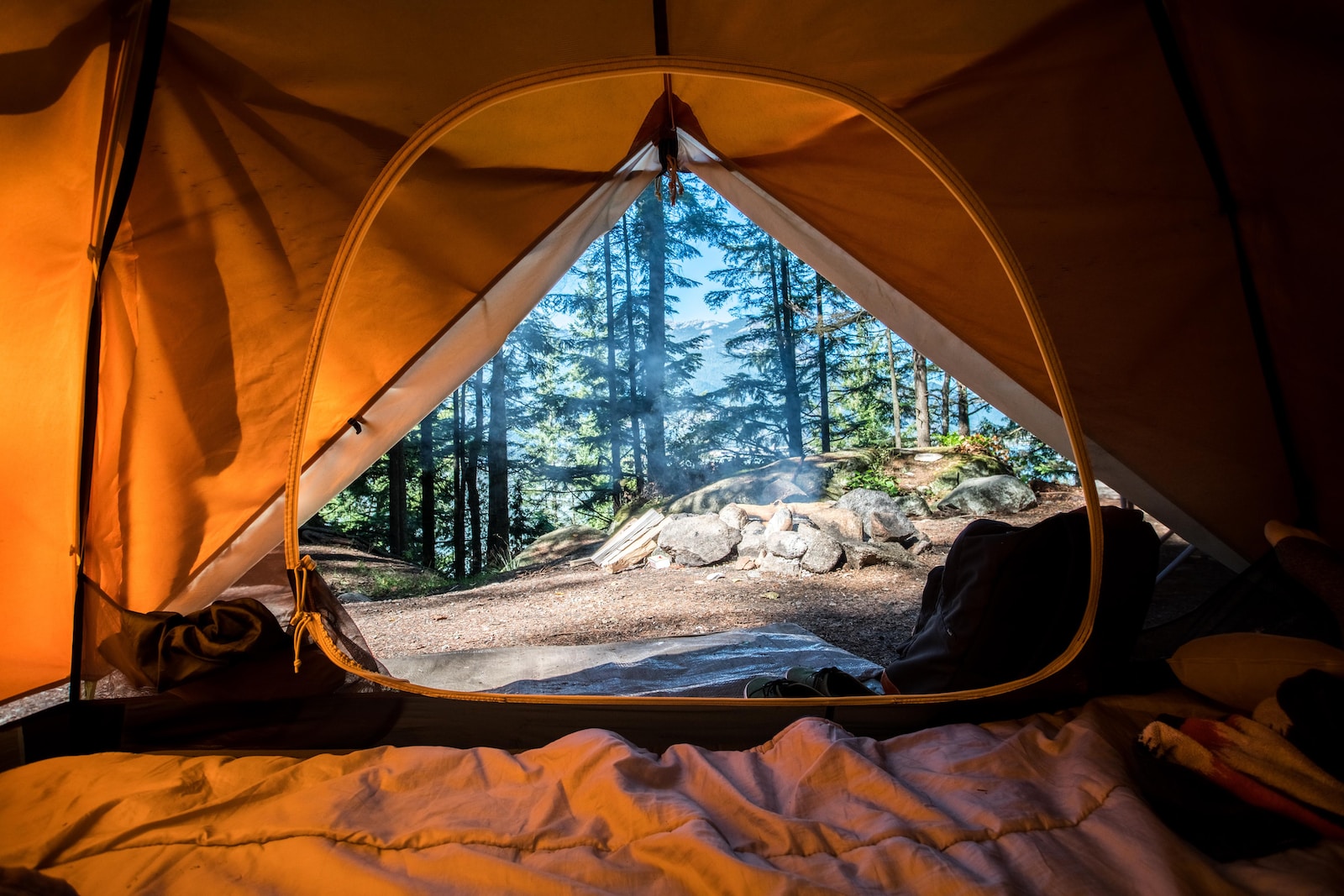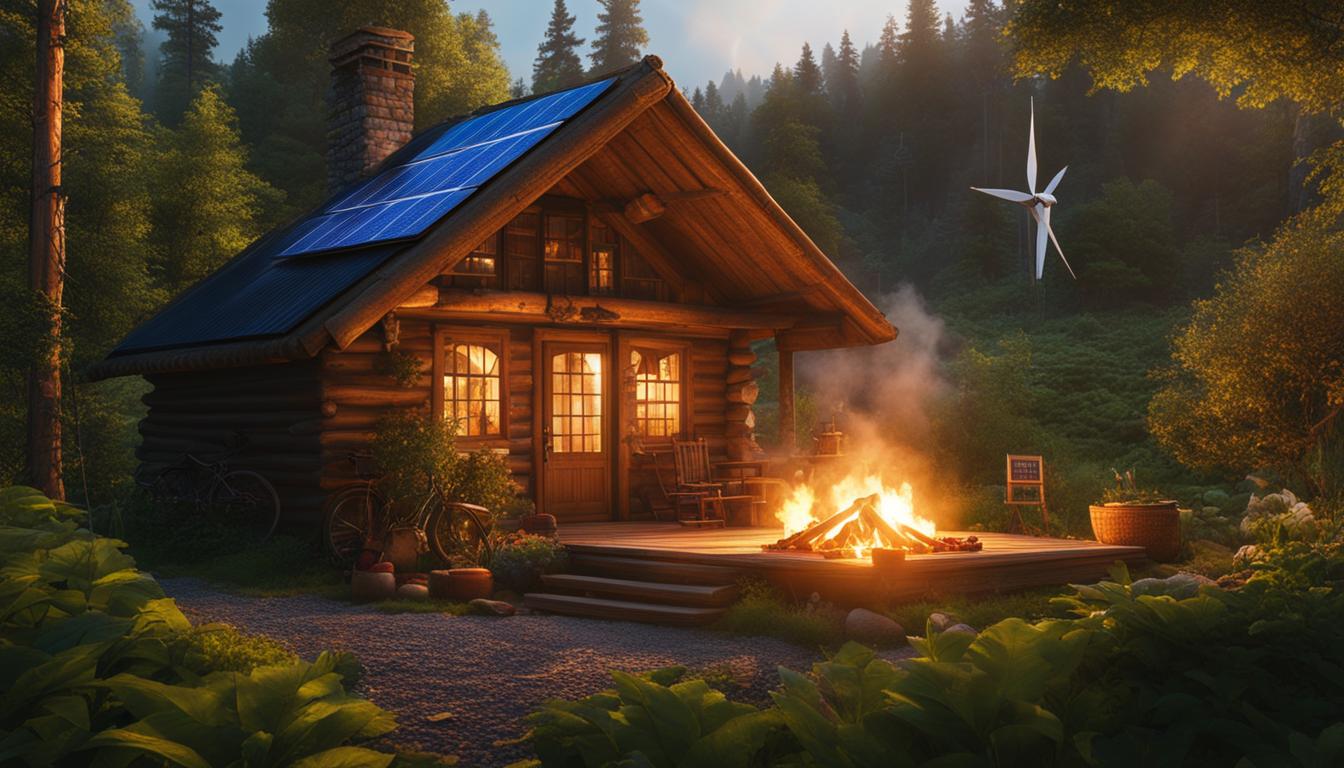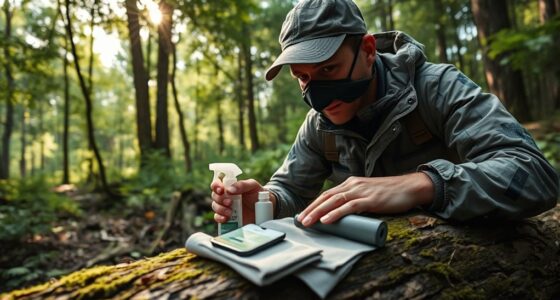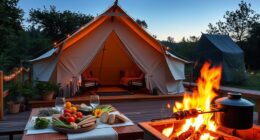Are you prepared to participate in exciting outdoor excursions without leaving a mark? You’re in the right place! Our detailed manual on stealth camping will provide you with all the necessary advice and strategies for quietly enjoying the great outdoors. Whether it’s locating secret camping spots or remaining unseen, be prepared for memorable adventures while honoring nature and leaving minimal impact.
Audio-Summary – The Ultimate Guide to Stealth Camping: Unveiling the Secrets of Discreet Adventure
1. What is stealth camping and why has it gained popularity among adventure enthusiasts?
Stealth camping refers to the act of setting up a temporary campsite in a discreet or hidden location, often without permission or knowledge of landowners or authorities. It involves finding secluded spots in remote areas such as forests, mountains, or even urban environments, where campers can spend the night without being noticed. This practice has gained popularity among adventure enthusiasts for several reasons.
Firstly, stealth camping allows outdoor enthusiasts to experience the thrill and freedom of exploring off-the-beaten-path locations that may not have designated campsites. It provides an opportunity to connect with nature on a deeper level and escape the crowds typically found at established campgrounds. Additionally, stealth camping enables adventurers to embark on multi-day hikes or bikepacking trips by allowing them to set up camp wherever they find themselves at the end of the day.
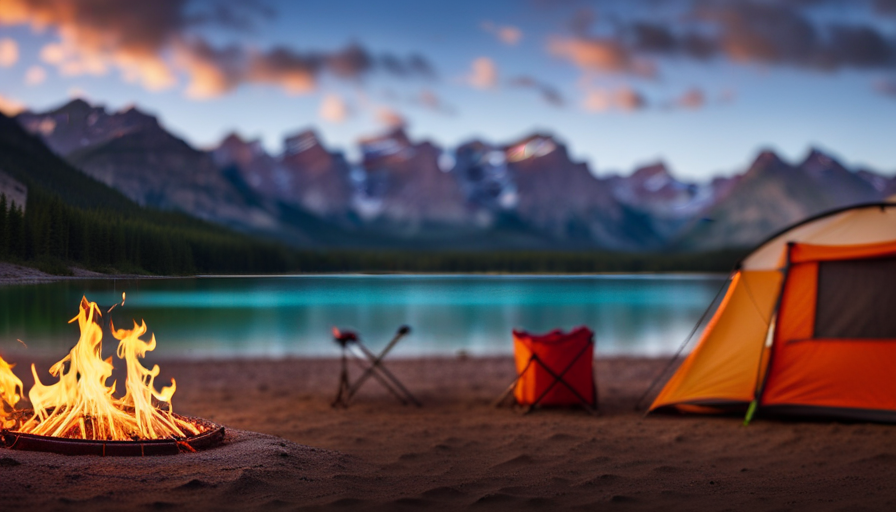
Furthermore, stealth camping can be a more budget-friendly option for those who want to minimize accommodation costs during their outdoor adventures. Instead of staying in hotels or paying for traditional campsites, stealth campers can save money by utilizing natural resources and relying on their own gear and equipment.
2. How to find suitable locations for stealth camping without attracting attention?
Finding suitable locations for stealth camping is crucial to ensure a successful and low-profile experience. Here are some tips to help you locate ideal spots without attracting attention:
Research your destination:
Prior to your trip, research potential areas where you plan to engage in stealth camping. Look for public lands such as national forests or Bureau of Land Management (BLM) areas that allow dispersed camping. These areas often have fewer restrictions and provide ample opportunities for finding secluded spots.
Use mapping tools:
Utilize online mapping tools, such as Google Maps or topographic maps, to identify areas that are off the beaten path and away from popular trails or roads. Look for dense vegetation, bodies of water, or other natural features that can provide cover and privacy.
Be mindful of private property:
Avoid trespassing on private property when looking for stealth camping locations. Respect landowners’ rights and always seek permission if you plan to camp on private land.
Arrive late and leave early:
To minimize the chances of being noticed, arrive at your stealth camping spot later in the evening when it is getting dark. This reduces the likelihood of encountering other people who may be around during daylight hours. Similarly, pack up and leave early in the morning to avoid drawing attention to your campsite.
Leave no trace:
When choosing a location for stealth camping, consider its impact on the environment. Select durable surfaces like rock or compacted soil rather than delicate vegetation. Leave the area exactly as you found it to minimize any signs of your presence.
3. Essential gear and equipment needed for a successful stealth camping trip
Sleeping Gear
One of the most important aspects of a stealth camping trip is ensuring a comfortable and restful night’s sleep. Invest in a high-quality sleeping bag that is suitable for the weather conditions you will be facing. Look for one that is lightweight, compact, and provides adequate insulation. Additionally, consider using a sleeping pad or inflatable mattress to provide cushioning and insulation from the cold ground.
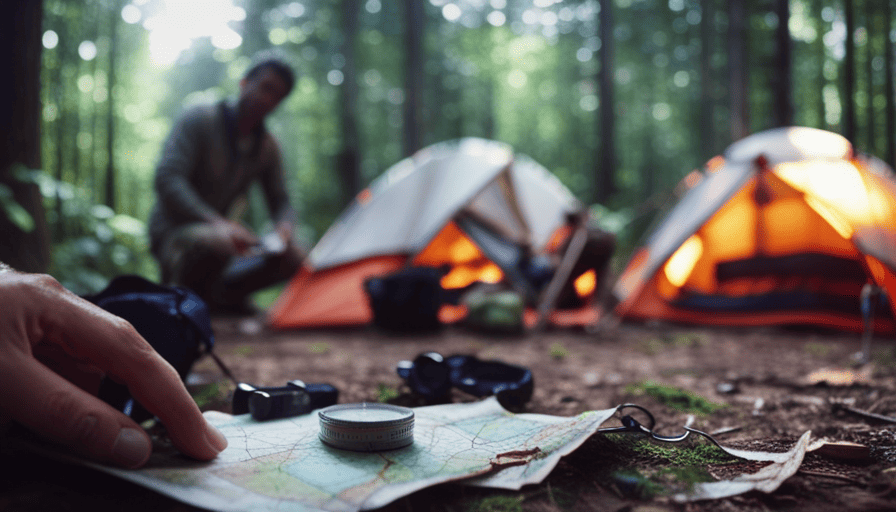
Recommended Sleeping Gear:
- A lightweight and compact sleeping bag suitable for the expected temperature range
- A sleeping pad or inflatable mattress for added comfort and insulation
Cooking Equipment
When it comes to preparing meals during your stealth camping adventure, having the right cooking equipment is essential. Opt for lightweight and portable options that are easy to carry in your backpack. A compact stove with fuel canisters, a set of durable cookware, utensils, and a small cutting board should suffice for most cooking needs. Don’t forget to pack some basic spices and condiments to enhance your meals.
Recommended Cooking Equipment:
- Lightweight stove with fuel canisters
- Durable cookware set (pot, frying pan)
- Utensils (spatula, spoon)
- Small cutting board
- Basic spices and condiments
Navigational Tools
Stealth camping often involves venturing into unfamiliar territory, so it’s crucial to have reliable navigational tools at hand. A compass or GPS device can help you find your way in case you get disoriented. It’s also wise to carry a detailed map of the area you plan to explore. Consider using smartphone apps that offer offline maps as an additional backup option.
Recommended Navigational Tools:
- Compass or GPS device
- Detailed map of the camping area
- Smartphone apps with offline maps
Lighting
Proper lighting is vital for a successful stealth camping trip, especially during nighttime activities. A headlamp or flashlight will prove invaluable when setting up camp, cooking meals, or navigating in the dark. Opt for lightweight and durable options that offer a long battery life. Additionally, it’s wise to pack spare batteries or a portable power bank to ensure you never run out of light.
Recommended Lighting Equipment:
- Headlamp or flashlight
- Spare batteries or portable power bank
Remember to always prioritize safety and leave no trace when engaging in stealth camping. Plan your trip well in advance and make sure to check local regulations and restrictions before setting off on your adventure.
4.1 Legal implications of stealth camping
Stealth camping, also known as wild camping or free camping, involves setting up temporary camp in areas that may not be designated for overnight stays. While it can be an exciting and adventurous way to connect with nature, it is important to be aware of the legal implications associated with this practice.
4.1.1 Trespassing laws
In many jurisdictions, stealth camping may fall under trespassing laws if you set up camp on private property without permission. Trespassing can result in fines or even criminal charges, depending on the severity of the offense and local regulations. It is crucial to research and understand the specific laws regarding trespassing in the areas where you plan to stealth camp.
4.1.2 National park regulations
National parks often have strict regulations regarding camping and overnight stays to protect the environment and preserve wildlife habitats. While some national parks allow designated backcountry camping, others strictly prohibit any form of overnight camping outside designated campsites. Violating these regulations can lead to hefty fines and penalties.
4.1.3 Conservation areas and protected lands
Conservation areas and other protected lands may have their own set of rules regarding camping activities. These rules are typically put in place to ensure the preservation of fragile ecosystems or cultural heritage sites within those areas. It is essential to familiarize yourself with any restrictions or permits required before attempting stealth camping in such locations.
4.2 Restrictions associated with stealth camping
In addition to legal implications, there are various restrictions that one must consider when engaging in stealth camping:
4.2.1 Fire restrictions
- In certain regions or during specific seasons, there may be fire restrictions in place to prevent wildfires. These restrictions can prohibit the use of campfires or cooking with open flames, limiting your options for warmth and meal preparation.
4.2.2 Leave No Trace principles
- Stealth campers should adhere to the principles of Leave No Trace, which promote responsible outdoor practices to minimize environmental impact. This includes packing out all trash, avoiding damage to vegetation, and leaving the campsite as you found it.
4.2.3 Noise and light pollution concerns
- Stealth camping requires being mindful of noise levels and minimizing light pollution to respect the tranquility of the surrounding environment and not disturb wildlife or other campers nearby.
4.2.4 Access limitations
- Some areas may have restricted access due to safety concerns, sensitive ecosystems, or ongoing conservation efforts. It is essential to research any access limitations that may exist in your chosen stealth camping location.
Overall, understanding the legal implications and restrictions associated with stealth camping is crucial for ensuring a positive experience while minimizing any negative impacts on the environment or local communities. Always research and respect the rules and regulations specific to each area where you plan to engage in this activity.
Choosing a low-impact campsite
When engaging in stealth camping, it is crucial to minimize your environmental impact by carefully selecting your campsite. Look for areas that are already disturbed or have minimal vegetation to avoid causing further damage. Avoid setting up camp near water sources or fragile ecosystems, such as wetlands or endangered plant species.
To ensure you leave no trace, consider using established campsites whenever possible. These designated areas often have amenities like fire pits and toilets that can help minimize the impact on the surrounding environment. If you must camp in a remote location, make sure to disperse your impact by not staying in the same spot for more than one night.
Leave No Trace principles
Adhering to Leave No Trace principles is essential when practicing stealth camping to protect the environment and preserve natural spaces for future generations. These principles include:
1. Pack it in, pack it out:
- Bring all your trash with you and dispose of it properly.
- Avoid leaving any litter behind, including biodegradable items like food scraps.
2. Minimize campfire impacts:
- If allowed and necessary, use established fire rings or pits.
- Keep fires small and ensure they are completely extinguished before leaving.
- Avoid collecting firewood from live trees or damaging vegetation.
3. Respect wildlife:
- Observe animals from a distance and avoid feeding them.
- Store food securely to prevent attracting wildlife to your campsite.
- Avoid approaching nesting sites or disturbing wildlife habitats.
4. Stay on durable surfaces:
- Stick to established trails or camp on durable surfaces like rock, gravel, or sand.
- Avoid trampling vegetation and fragile ecosystems.
5. Dispose of waste properly:
- If there are no restroom facilities available, bury human waste in a small hole at least 6-8 inches deep and cover it with soil.
- Pack out all toilet paper and hygiene products.
By following these principles, you can ensure that your stealth camping activities have minimal impact on the environment.
1. Choose a safe and secluded location
When embarking on a stealth camping adventure, it is crucial to select a safe and secluded location to ensure your personal safety. Look for areas that are away from popular hiking trails or campsites, as these places are more likely to be frequented by other campers or potential intruders. Additionally, consider the terrain of the area and choose a spot that provides natural barriers like dense vegetation or rocky outcrops to enhance privacy and security.
Tips:
- Research potential camping spots in advance using online maps or guidebooks.
- Consider seeking permission from landowners if you plan on camping on private property.
- Avoid camping near bodies of water that may flood during heavy rain or storms.
2. Keep a low profile
One of the key aspects of stealth camping is maintaining a low profile to avoid attracting attention. This involves minimizing any visible signs of your presence and leaving no trace behind. Set up your campsite discreetly, keeping tents hidden from view and avoiding bright colors that could easily catch someone’s eye. It’s also important to keep noise levels down, especially during nighttime, as loud noises can draw unwanted attention.
Tips:
- Pitch your tent in an inconspicuous location, such as behind trees or bushes.
- Use camouflage tarps or natural materials to blend in with the surroundings.
- Avoid using bright lights or lanterns at night; opt for dimmed headlamps instead.
3. Be aware of wildlife hazards
While enjoying the beauty of nature during your stealth camping adventure, it’s essential to be aware of potential wildlife hazards. Research the area beforehand to understand the types of animals that inhabit the region and their behavior. Take necessary precautions to prevent encounters with dangerous wildlife, such as storing food securely in bear-resistant containers or hanging it from a tree branch out of reach.
Tips:
- Carry bear spray or other deterrents if camping in areas known for bear activity.
- Keep a clean campsite by properly disposing of food scraps and garbage.
- Store all scented items, including toiletries, away from your sleeping area.
Choosing the right location
When setting up camp discreetly to avoid detection, it is crucial to choose the right location. Look for areas that provide natural cover such as dense foliage or rock formations. Avoid open spaces that are easily visible from a distance. Additionally, consider camping near water sources like rivers or lakes, as these can help mask any noise you might make while setting up camp.
Consideration of wind direction
Another important factor to keep in mind when selecting a campsite is the direction of the wind. Position your campsite in a way that allows the wind to carry any potential noise or smells away from potential observers. This will help minimize the chances of detection by keeping your presence concealed.
Minimizing light and noise
To further enhance your stealthy camping setup, it is essential to minimize both light and noise. Use low-intensity lighting options such as red LED lights instead of bright lanterns, as they are less likely to attract attention from afar. Keep conversations and other activities quiet and muffled to avoid drawing unwanted attention.
Utilizing camouflage techniques
Camouflage can be an effective technique for blending into your surroundings and avoiding detection. Use natural materials like branches, leaves, or mud to create makeshift camouflage for your tent or gear. Make sure to match the colors and textures of your surroundings as closely as possible to remain inconspicuous.
- Bring a lightweight tarp or camo netting that can be draped over your campsite for additional concealment.
- Set up your tent in a naturally shaded area or under trees to reduce its visibility.
- Avoid using brightly colored equipment or clothing that could easily stand out in the environment.
By following these techniques, you can increase your chances of setting up camp discreetly and remaining undetected in various outdoor settings. Remember always to prioritize Leave No Trace principles and respect the environment you are camping in.
Choosing the right sleeping gear
When stealth camping in challenging environments, it is crucial to have the appropriate sleeping gear to ensure a comfortable and restful sleep. Firstly, invest in a high-quality sleeping bag that is suitable for the temperature range of your camping location. Look for one that is lightweight and compact, making it easier to carry during your stealth camping adventures.
In addition to a sleeping bag, consider using a sleeping pad or mattress for added comfort. This will provide insulation from the cold ground and cushioning for a better night’s sleep. There are various options available, such as inflatable pads or foam mattresses, so choose one that suits your preferences and needs.
Setting up a cozy sleep environment
To optimize your sleep while stealth camping in challenging environments, take some steps to create a cozy sleep environment. Start by finding a level and dry spot for setting up your sleeping area. Clear away any sharp objects or debris that could disrupt your sleep or puncture your gear.
Next, consider using a tent or bivy sack to provide protection from the elements and enhance privacy. A tent can shield you from rain, wind, and insects while also offering some insulation. Alternatively, bivy sacks are lightweight and easy to set up, providing minimalistic shelter while still allowing you to enjoy the surrounding nature.
Tips for staying warm
- Dress in layers: Layering clothing allows you to adjust according to changing temperatures throughout the night.
- Use warm accessories: Wear thermal socks, gloves, and a beanie to keep extremities warm.
- Add extra insulation: Place blankets or an emergency blanket under your sleeping pad for additional warmth.
- Stay hydrated: Drinking warm fluids before bed helps maintain body temperature.
Ensuring safety and security
While ensuring a comfortable sleep is important, it is equally crucial to prioritize safety and security during stealth camping in challenging environments. Always be aware of your surroundings and choose a secluded spot that minimizes the risk of detection or encounters with wildlife.
Consider using noise-cancelling earplugs or playing soothing nature sounds to drown out any potential disturbances. Additionally, keep your belongings organized and within reach to avoid fumbling around in the dark, which could attract unwanted attention.
Remember to respect local laws and regulations regarding stealth camping, as well as leave no trace principles by cleaning up after yourself and leaving the campsite as you found it.
1. Choosing the right cooking equipment
Selecting compact and lightweight options
When it comes to stealth camping, it’s crucial to choose cooking equipment that is both efficient and easy to carry. Look for compact and lightweight options such as collapsible pots and pans, nesting cookware sets, or even a portable stove that can be easily packed away. These items will not only save space in your backpack but also make it easier to cook quietly without drawing attention.
Opting for quiet cooking tools
To ensure a discreet cooking experience, consider using utensils and tools that produce minimal noise. Look for silicone or wooden spatulas instead of metal ones, as they tend to create less clattering sounds while stirring or flipping food. Additionally, choosing a whisper-quiet stove or investing in a sound-dampening device can significantly reduce the noise generated during meal preparation.
2. Planning meals in advance
Creating a meal plan
Before embarking on your stealth camping adventure, take some time to plan out your meals in advance. This will help you determine the ingredients you need and streamline the cooking process, allowing you to prepare meals more efficiently. Consider choosing recipes that require minimal preparation and use ingredients that can be easily stored and carried without spoiling.
Packaging ingredients strategically
When packing ingredients for your stealth camping trip, opt for packaging solutions that minimize noise and keep everything organized. Use resealable bags or small containers to store spices, condiments, and other loose items securely. For perishable foods like meat or vegetables, vacuum-sealed bags can help preserve freshness while reducing excess packaging noise.
3. Practicing proper cooking techniques
Maintaining low heat settings
To avoid attracting unwanted attention with the sound of sizzling or boiling, it’s advisable to cook your meals using low heat settings whenever possible. This not only reduces noise but also conserves fuel if you’re cooking with a portable stove. Slow cooking methods like simmering or braising can be ideal for stealth camping, as they allow you to cook food thoroughly without generating excessive noise.
Utilizing one-pot recipes
Preparing meals that require minimal cookware and utensils can significantly contribute to a quiet and efficient cooking experience. One-pot recipes, where all ingredients are cooked together in a single pot or pan, are perfect for stealth camping.
They minimize the number of dishes to clean and reduce clattering noises associated with multiple pots and pans. In summary, when it comes to cooking meals quietly and efficiently during stealth camping, selecting compact and lightweight cooking equipment, planning meals in advance, and practicing proper cooking techniques are key.
By following these tips and utilizing tools designed for stealthy cooking, you can enjoy delicious meals while minimizing noise and maintaining your campsite’s secrecy.
1. Reading
One of the best ways to stay entertained and occupied during downtime while maintaining a low profile is by reading. Whether it’s a novel, magazine, or even online articles, reading can transport you to different worlds and keep your mind engaged. Consider bringing a variety of books or downloading e-books on your electronic device to have a range of options available. Additionally, if you’re in a location where reading may attract attention, consider using an e-reader with adjustable screen brightness or opting for inconspicuous book covers.
2. Listening to podcasts or audiobooks
If reading isn’t your preferred activity or you want to switch things up, listening to podcasts or audiobooks can be a great alternative. With countless genres and topics available, you can find something that piques your interest and keeps you entertained for hours.
Load up your device with downloaded episodes or audiobooks before heading out so that you have plenty of content readily accessible without relying on an internet connection.
3. Engaging in creative hobbies
During downtime, engaging in creative hobbies can help pass the time while allowing you to express yourself and develop new skills. Consider bringing along small art supplies such as sketchbooks, coloring books, or knitting materials that are easy to carry and won’t attract much attention. These activities not only provide entertainment but also offer relaxation and stress relief.
a) Sketching
Sketching is a portable and low-profile hobby that allows you to capture scenes from your surroundings or let your imagination run wild on paper. All you need is a sketchbook and some pencils or pens to get started.
b) Coloring
Coloring books for adults have gained popularity in recent years due to their calming effects and ability to reduce stress. These books often feature intricate designs that can keep you occupied for hours. Pack a small set of colored pencils or markers to bring your creations to life.
c) Knitting or crocheting
Knitting or crocheting are excellent hobbies for keeping your hands busy while maintaining a low profile. You can easily carry a small project, such as a scarf or hat, and work on it during downtime. Not only will you stay entertained, but you’ll also have a handmade item to show for your efforts.
4. Exploring local attractions
If you’re in an area where it’s safe to do so, take advantage of your downtime to explore local attractions. Research nearby museums, parks, or historical sites that may offer interesting experiences without drawing too much attention. Consider visiting during off-peak hours when there are fewer people around.
5. Learning new skills through online courses
If you have access to the internet, taking online courses can be an excellent way to stay entertained and occupied while maintaining a low profile. Many platforms offer a wide range of courses on various subjects, allowing you to learn at your own pace and explore new interests. Whether it’s photography, cooking, coding, or any other skill you’ve been wanting to develop, online courses provide flexibility and intellectual stimulation.
In summary, there are numerous strategies for staying entertained and occupied during downtime while maintaining a low profile. Reading, listening to podcasts or audiobooks, engaging in creative hobbies like sketching or coloring, exploring local attractions cautiously, and learning new skills through online courses are all great options that can keep you engaged and entertained without attracting unwanted attention.
Challenges Faced
One of the main challenges faced during real-life successful stealth camping experiences is finding suitable locations to set up camp. Stealth campers often have to search for hidden spots away from popular tourist areas or designated campsites.
This can involve navigating through dense forests, climbing hills, or even crossing rivers. Additionally, finding a location that provides enough cover and privacy while still being accessible can be tricky. Another challenge is staying undetected by authorities or landowners. Stealth campers must be cautious not to attract attention with noise, lights, or excessive movement.
They may need to stay quiet and avoid using any equipment that could make loud noises, such as gas stoves or generators. Furthermore, they must always be aware of their surroundings and ready to quickly pack up and move if necessary.
Lessons Learned
Through real-life successful stealth camping experiences, campers have learned valuable lessons that can help others who are interested in this type of adventure. Firstly, it is essential to research local laws and regulations regarding camping in certain areas.
Understanding the legalities can prevent unnecessary encounters with authorities and potential fines. Additionally, preparing the right gear is crucial for a successful stealth camping trip. Lightweight and compact equipment that can easily be concealed is highly recommended. Investing in high-quality sleeping bags, tents with good camouflage features, and portable cooking systems can greatly enhance the experience.
Lastly, maintaining a low impact on the environment is an important lesson learned during stealth camping experiences. Campers should always practice Leave No Trace principles by properly disposing of waste, minimizing campfire impacts, and respecting wildlife habitats.
Tips for Finding Suitable Stealth Camping Spots:
– Look for less-traveled hiking trails or off-the-beaten-path locations. – Scout satellite imagery or topographic maps to identify potential hidden spots. – Seek out public lands where dispersed camping might be allowed. – Consider camping near water sources, such as rivers or lakes, for added privacy and convenience.
Essential Gear for Stealth Camping:
– Lightweight and compact tent with good camouflage features. – High-quality sleeping bag suitable for the expected weather conditions. – Portable cooking system that operates silently, such as a backpacking stove. – Camouflage clothing and gear to blend in with the surroundings. – Headlamp or flashlight with a red light mode to avoid attracting attention at night.
Leave No Trace Principles
When engaging in stealth camping, it is crucial to follow the principles of Leave No Trace to minimize your impact on the environment. These principles include:
- Plan Ahead and Prepare: Research the area you plan to camp in and understand any regulations or restrictions. Choose a campsite that is durable and will have minimal impact.
- Dispose of Waste Properly: Pack out all trash and waste, including food scraps. Use biodegradable soap at least 200 feet away from water sources when washing dishes or yourself.
- Minimize Campfire Impacts: If allowed, use established fire rings or portable stoves instead of creating new fire pits. Only use dead and downed wood for fires and ensure they are completely extinguished before leaving.
- Respect Wildlife: Observe animals from a distance and do not feed them. Store food securely to prevent attracting wildlife to your campsite.
- Leave What You Find: Preserve the natural beauty by leaving rocks, plants, and other natural objects as you found them. Do not dig trenches or build structures that can disrupt the landscape.
Campsite Selection
Selecting an appropriate stealth camping spot is essential for minimizing your impact on the environment. Consider the following factors:
- Suitability: Choose a location that can handle camping without causing damage, such as durable surfaces like rock, sand, or gravel.
- Invisibility: Opt for spots that are hidden from view to reduce the chances of being discovered by others who may not appreciate stealth camping.
- Dispersed Camping: Look for areas where dispersed camping is permitted to ensure you are not violating any regulations or trespassing on private property.
- Leave No Trace: Consider the proximity to water sources, fragile vegetation, and wildlife habitats. Avoid camping near sensitive areas that could be easily damaged.
Packing Essentials for Leave No Trace Stealth Camping
To effectively leave no trace behind during your stealth camping excursion, make sure to pack the following essentials:
- LNT Kit: Include a small trowel for burying human waste, biodegradable soap, trash bags, and a lightweight stove for cooking instead of relying on campfires.
- Water Filter: Carry a portable water filter or purification tablets to minimize the need for disposable plastic bottles and avoid contaminating natural water sources.
- Biodegradable Products: Choose biodegradable toiletries and dishwashing soap to reduce their impact on the environment.
- Trekking Poles or Tarp Poles: These can be useful for setting up a tarp shelter without damaging trees or vegetation.
- Headlamp or Flashlight: Use these low-impact lighting options instead of campfires at night to preserve darkness and minimize disturbance to wildlife.
Remember, practicing Leave No Trace principles ensures that future campers can enjoy nature in its pristine state.
Choosing the right location
When planning a stealth camping trip, it is crucial to select the right location that provides adequate cover and minimizes the chances of being discovered. Look for secluded areas away from popular hiking trails or campsites. Consider factors such as proximity to water sources, level ground for setting up tents, and natural barriers like trees or rock formations that can provide additional concealment.
Pack appropriate gear
Before embarking on a stealth camping trip, ensure you have the necessary gear to withstand various weather conditions. Pack lightweight yet durable tents, sleeping bags suitable for the expected temperatures, and waterproof tarps to protect against rain or dew. Additionally, bring warm clothing layers and extra socks in case temperatures drop during the night.
Be mindful of weather conditions
Weather conditions play a significant role in any camping trip, especially when trying to remain undetected. Check the forecast before heading out and be prepared for unexpected changes in weather. If rain is expected, set up your campsite on higher ground to avoid potential flooding. In hot climates, seek shade under trees or use portable sun shelters to prevent overheating.
Taking precautions for stealth camping
When engaging in stealth camping, it’s important to take certain precautions to ensure safety and minimize impact on the environment.
Leave no trace
One of the fundamental principles of stealth camping is leaving no trace behind. Practice Leave No Trace ethics by packing out all trash and disposing of human waste properly. Avoid cutting down live vegetation or damaging natural resources during your stay.
Keep noise levels low
To maintain a low profile while stealth camping, keep noise levels at a minimum. Avoid loud conversations or playing music that could attract attention from nearby hikers or campers. Use headphones if you want to listen to music privately.
Stay aware of your surroundings
While enjoying the solitude of a stealth camping trip, it’s essential to stay vigilant and aware of your surroundings. Be cautious of wildlife in the area and take necessary precautions to store food securely, preventing encounters with animals.
Keep an eye out for signs of other campers or hikers nearby to avoid unwanted interactions. By considering weather conditions, taking necessary precautions, and being mindful of your impact on the environment, you can have a successful and enjoyable stealth camping experience.
Benefits of group or family-oriented stealth camping adventures
Stealth camping adventures can be even more enjoyable when experienced as a group or with family. Not only does it provide an opportunity to bond and create lasting memories, but it also offers several benefits.
Firstly, being in a group ensures safety and security, as there is strength in numbers. It reduces the chances of encountering any unforeseen dangers or feeling vulnerable in unfamiliar surroundings. Additionally, sharing the experience with loved ones fosters a sense of togetherness and strengthens relationships.
Enhanced learning opportunities for children
One of the major advantages of embarking on group or family-oriented stealth camping adventures is the educational aspect it offers, especially for children. Exploring nature and its wonders firsthand provides valuable lessons about wildlife, ecosystems, and conservation. Children can learn about different plants and animals, understand their habitats, and develop an appreciation for the environment. Moreover, they acquire essential survival skills while learning how to set up camp, start a fire safely, navigate through trails, and practice leave-no-trace principles.
Activities to engage in during group stealth camping adventures
When planning a group or family-oriented stealth camping adventure, there are numerous activities that can be incorporated into the experience to make it even more enjoyable.
Consider organizing nature scavenger hunts where participants search for specific items such as leaves, rocks, or animal tracks. This engages everyone in observation skills while exploring the surroundings.
Another fun activity is stargazing sessions at night; lying under the open sky and identifying constellations creates a magical ambiance while providing an opportunity to learn about astronomy. Moreover, storytelling around a campfire can bring people together by sharing personal experiences or spooky tales that add excitement to the adventure.
It’s also worth considering team-building games like setting up obstacle courses or friendly competitions such as sack races or tug-of-war. These activities promote teamwork, enhance communication skills, and create a sense of camaraderie among the participants.
Encountering Wildlife
Stealth camping in the wilderness often brings the possibility of encountering wildlife. While these encounters can be thrilling, it is important to prioritize safety and minimize any negative impact on the animals. Firstly, it is crucial to research the specific area you plan to camp in and familiarize yourself with the local wildlife species and their behaviors. This knowledge will help you understand how to act appropriately when encountering them.
Precautionary Measures
When stealth camping, take precautionary measures to reduce the chances of attracting wildlife to your campsite. Store all food securely in bear-resistant containers or hang it from a tree branch away from your sleeping area.
Avoid cooking or eating near your tent, as food odors can attract curious animals. Additionally, keep a clean camp by properly disposing of any trash or leftover food scraps. During an encounter with wildlife, maintain a safe distance and observe them from afar. Do not approach or attempt to feed them, as this can disrupt their natural behavior and create potential danger for both parties involved. If you come across larger predators like bears or mountain lions, make yourself look bigger by raising your arms and speaking calmly but firmly.
Dealing with Unexpected Visitors
In some cases, unexpected human visitors may stumble upon your stealth camping spot. While most encounters are harmless, it is essential to be prepared and handle such situations tactfully.
Safety Precautions
To ensure your safety when unexpected visitors arrive at your stealth campsite, consider taking certain precautions. Firstly, always trust your instincts – if something feels off about the person approaching, it’s better to err on the side of caution. Keep valuable belongings hidden and out of sight from prying eyes.
If someone approaches your campsite uninvited, calmly assess the situation before deciding on an appropriate course of action. Politely but firmly communicate your boundaries and make it clear that you are camping there. If the visitor seems aggressive or poses a threat, it is advisable to pack up and relocate to a different location. Remember, maintaining good communication skills and being respectful can often diffuse tense situations. However, prioritize your safety above all else and trust your judgment when dealing with unexpected visitors during a stealth camping experience.
Conclusion:
In conclusion, stealth camping has become increasingly popular among adventure enthusiasts due to the thrill of exploring off-the-grid locations, the freedom it offers to connect with nature, and the cost-saving benefits. To find suitable locations for stealth camping without attracting attention, thorough research, mapping tools, respect for private property, arriving late and leaving early, and practicing leave no trace principles are essential. By following these guidelines, adventurers can enjoy a discreet and immersive outdoor experience.

